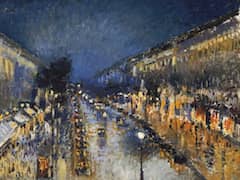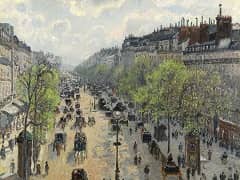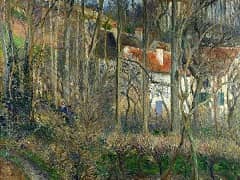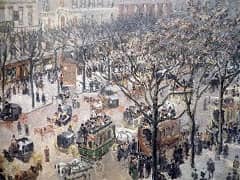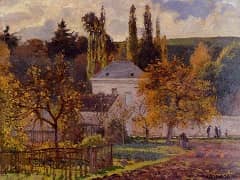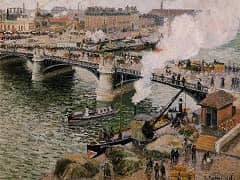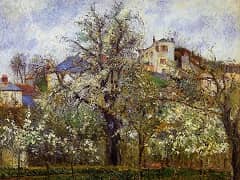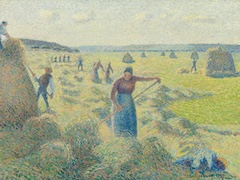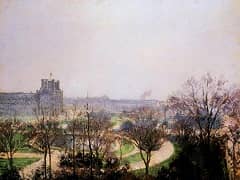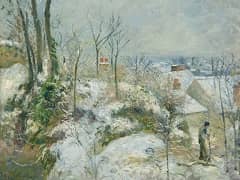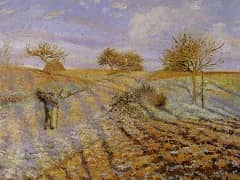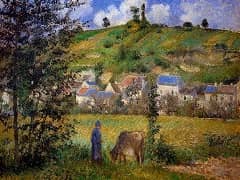Woman and Child at the Well, 1882 by Camille Pissarro
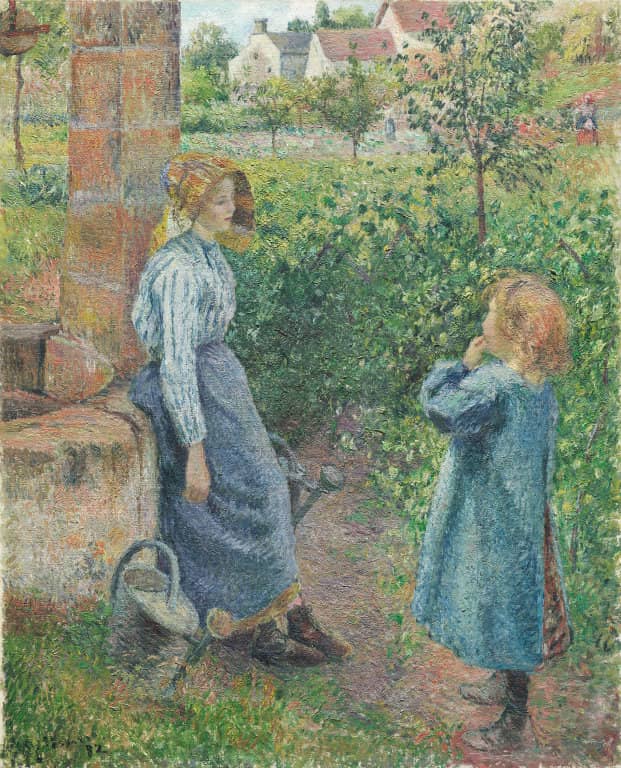
Painted in the secluded, rustic community of Eragny, where Camille Pissarro was to settle permanently with his family in 1883, Woman and Child at the Well captures the day-to-day activities of rural life that preoccupied
the artist throughout his career. The young woman depicted here was probably a domestic servant in Pissarro's household, and the child may have been Ludovic Rodo Pissarro, the artist's fourth son.
The apparent subject of this painting is an idle moment shared by the two figures in the foreground. Their contrasting poses juxtapose the strains of physical labor with the innocent exuberance of childhood. A peasant
woman slouches listlessly beside the watering cans she must fill; she will soon rejoin the other women in the far background, who diligently irrigate rows of young vegetables in the garden beside the farmhouse. Her
exhaustion from this strenuous task is evident as she slumps back against the wall of the well while gazing blankly at a child who, oblivious to the woman's toils, raises its hand whimsically to its mouth.
With its high horizon line, compressed space, and thick, hatching brush strokes strewn loosely across the surface, particularly in the foreground flora, the Art Institute's canvas is typical of Pissarro's work from
this period. Facing something of a stylistic crisis as his Impressionist colleagues began to move in different directions, Pissarro was determined to assert his ability to produce large-format figure paintings. Here,
however, he seems to have devoted as much attention to the lush, verdant setting as to the interaction between woman and child. In a manner reminiscent of the work of Jean Francois Millet, Pissarro portrayed human activity
wholly embedded in the forms and rhythms of nature.

